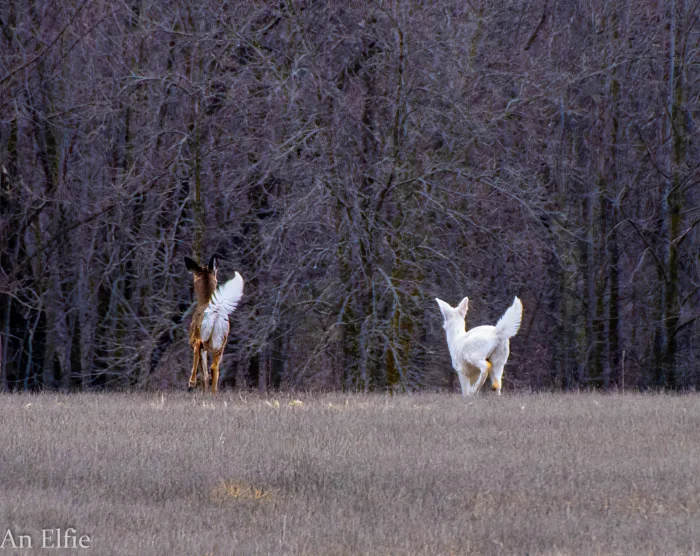not a hunter-but respect it.

A nature enthusiast caught a rare glimpse of what appears to be an albino deer near Lake Mille Lacs.
Lora Elfmann snapped the photo of the ghostly deer among a pack of white-tails in a field between the towns Isle and Wahkon, which are located on the southeast side of Mille Lacs in east-central Minnesota.
"I drive around or hike almost daily looking for pic opportunities," Elfmann wrote in a message to Bring Me The News. "I've only seen the albino twice. Same one in the same field. But I know there's at least one other one."
Barbara Keller, the big game program leader of the fish and wildlife division with the DNR, says biologists estimate albino deer occur only once in every 20,000 or 30,000 deer.
As magnificent the sight of an albino deer is, the genetic disorder that causes a lack of pigment makes them an easy target for predators. Albino deer are also known to suffer from other genetic defects.
"They generally experience greater mortality than typical deer due to their diminished ability to evade predators when the snow melts, and can also be associated with other genetic defects including vision and spinal problems," said Keller.
The white deer running alongside a white-tail near Mille Lacs Lake earlier this month.
The white deer running alongside a white-tail near Mille Lacs Lake earlier this month.
Credit: Lora Elfmann
White deer that are not 100% white are known as a leucistic (also called piebald) deer. Leucism causes varying levels of white on a deer's body, which is why some are half brown, half white or sometimes only have white splotches on their bodies.
Elfmann's photos show a couple of tan splotches on the deer's hind legs, but Keller and a second could be urine stains rather than an indicator of leucism.
"That spot on it’s back leg is where the tarsal gland is located, and that is an area deer typically urinate and stain. So I think that area might just be stained, not an actual area of dark fur," said Keller, whose opinion was confirmed by the DNR's ungulate research scientist.
There are no laws protecting albino deer from hunters in Minnesota.